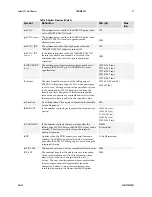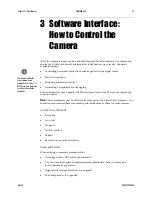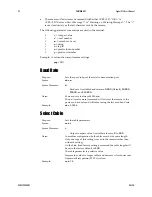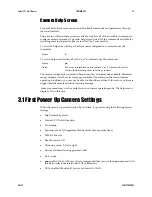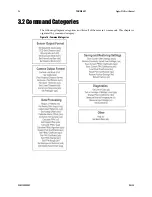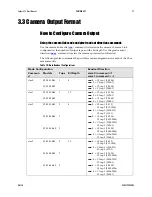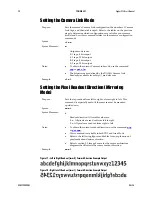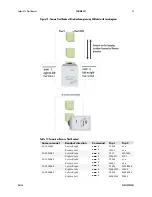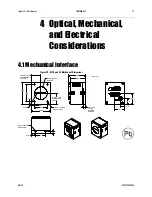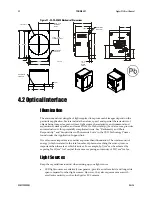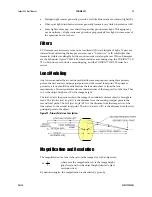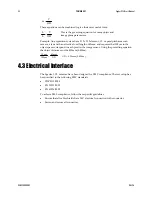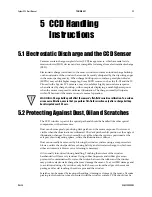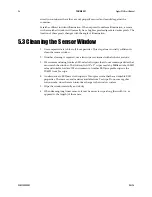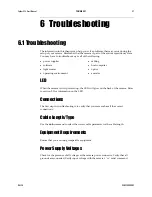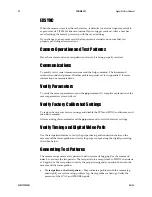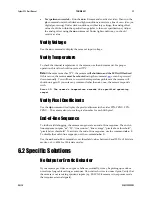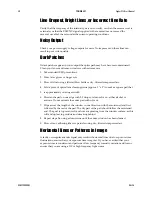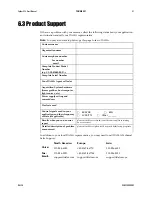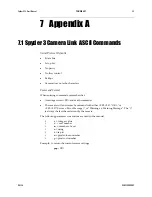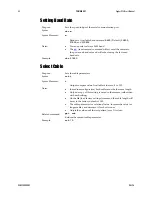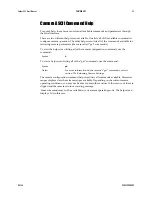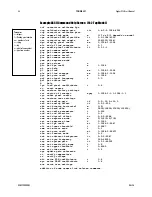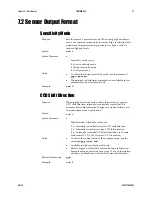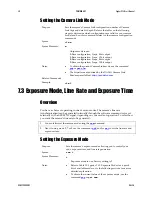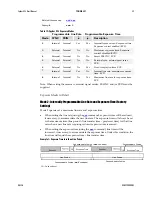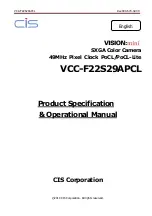
Spyder 3 CL User's Manual
PRELIMINARY
35
DALSA
03-032-20008-03
!
5
CCD Handling
Instructions
5.1 Electrostatic Discharge and the CCD Sensor
Cameras contain charge-coupled device (CCD) image sensors, which are metal oxide
semiconductor (MOS) devices and are susceptible to damage from electrostatic discharge
(ESD).
Electrostatic charge introduced to the sensor window surface can induce charge buildup
on the underside of the window that cannot be readily dissipated by the dry nitrogen gas
in the sensor package cavity. When charge buildup occurs, surface-gated photodiodes
(SGPDs) may exhibit higher image lag. Some SGPD sensors, such as the IL-P4 and the IT-
P4 used in the Spyder 3 CL cameras, may also exhibit a highly non-uniform response
when affected by charge buildup, with some pixels displaying a much higher response
when the sensor is exposed to uniform illumination. The charge normally dissipates
within 24 hours and the sensor returns to normal operation.
WARNING:
Charge buildup will affect the camera’s flat-field correction calibration. To avoid an
erroneous calibration, ensure that you perform flat-field correction only after a charge buildup
has dissipated over 24 hours.
5.2 Protecting Against Dust, Oil and Scratches
The CCD window is part of the optical path and should be handled like other optical
components, with extreme care.
Dust can obscure pixels, producing dark patches on the sensor response. Dust is most
visible when the illumination is collimated. The dark patches shift position as the angle of
illumination changes. Dust is normally not visible when the sensor is positioned at the
exit port of an integrating sphere, where the illumination is diffuse.
Dust can normally be removed by blowing the window surface using a compressed air
blower, unless the dust particles are being held by an electrostatic charge, in which case
either an ionized air blower or wet cleaning is necessary.
Oil is usually introduced during handling. Touching the surface of the window
barehanded will leave oily residues. Using rubber fingercots and rubber gloves can
prevent oil contamination. However, the friction between the rubber and the window
may produce electrostatic charge that may damage the sensor. To avoid ESD damage and
to avoid introducing oily residues, only hold the sensor from the edges of the ceramic
package and avoid touching the sensor pins and the window.
Scratches can be caused by improper handling, cleaning or storage of the sensor. Vacuum
picking tools should not come in contact with the window surface. CCDs should not be
Summary of Contents for Spyder 3 S3-10-01k40-00-R
Page 22: ...22 PRELIMINARY Spyder 3 CL User s Manual 03 032 20008 03 DALSA ...
Page 30: ...30 PRELIMINARY Spyder 3 CL User s Manual 03 032 20008 03 DALSA ...
Page 42: ...42 PRELIMINARY Spyder 3 CL User s Manual 03 032 20008 03 DALSA ...
Page 104: ...104 PRELIMINARY Spyder 3 CL User s Manual 03 032 20008 03 DALSA ...
Page 112: ...112 PRELIMINARY Spyder 3 CL User s Manual 03 032 20008 03 DALSA ...
Page 114: ...114 PRELIMINARY Spyder 3 CL User s Manual 03 032 20008 03 DALSA ...

